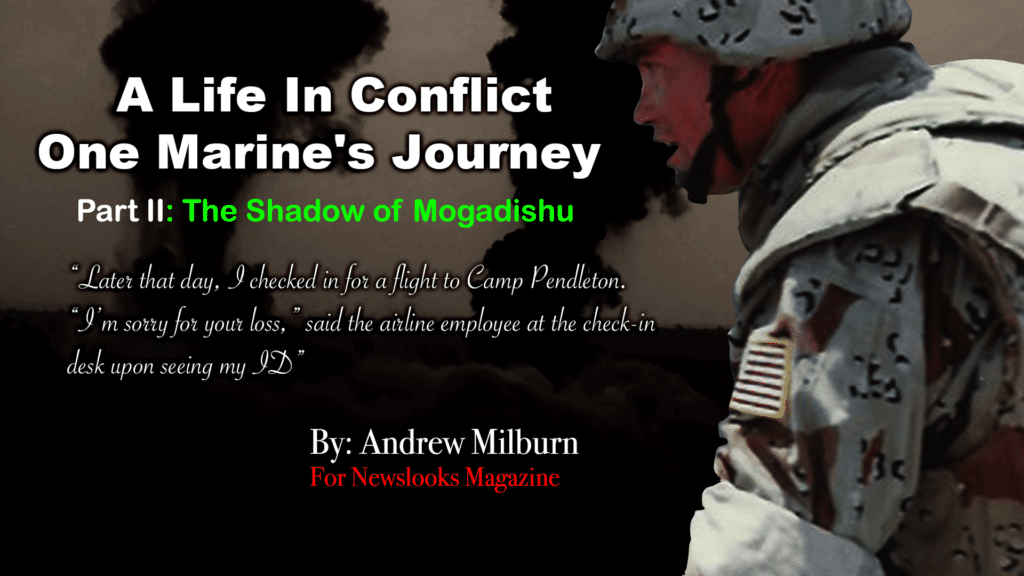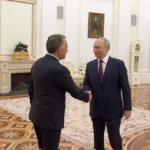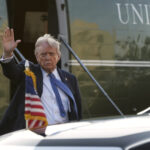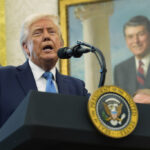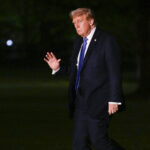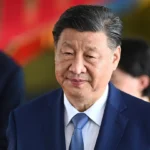The Shadow of Mogadishu
The US flight from Somalia three decades ago has had catastrophic consequences ever since
Before Afghanistan and Iraq, before deadly encounters became commonplace; the decision to open fire, to cross the line between from peace to combat, from everyday commonplace soldiering to the use of lethal force, was a momentous one. Despite all my training as a Marine platoon commander, I really didn’t believe that I would ever be called upon to make that decision. Until, on an otherwise relatively quiet day, I had to.
It was as pleasant a day as you could expect in Mogadishu, marred only by intermittent gunfire none of which sounded close, and the omnipresent stench that characterized the city: a putrid mix of human waste and decay which, had there been no breeze, would have had some of us gagging.
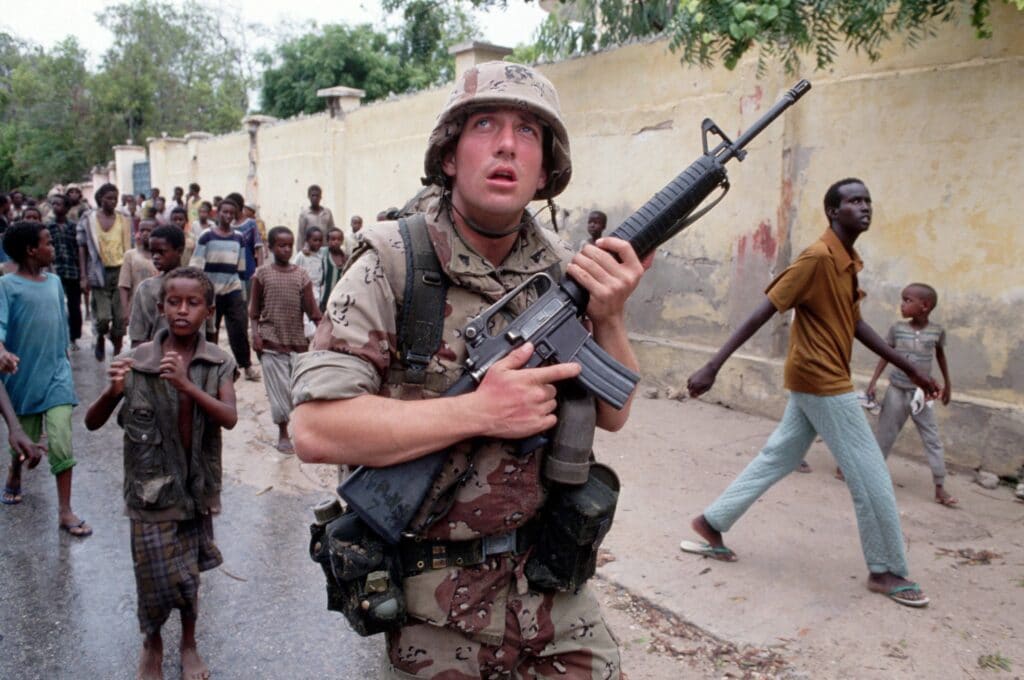
Without a word being spoken, there was a perceptible change in mood as the patrol left the narrow streets and bustling crowds around the port, and streamed with well-practiced ease onto the road leading to the Parliament building, scanning the derelict buildings on either side with eyes aching from the glare of the sun.
You could never relax in this part of town. The road along which we walked, a wide boulevard fringed on either side by ornate Italian architecture ravaged by years of conflict, was the Green Line, the disputed boundary between Mogadishu’s two main warlords. In a city teeming with life, it was empty and still – redolent with menace.
As we neared a wide intersection at the top of the hill, the point man paused to wave up the two Marines whose job it was to provide flank security. Then came the sharp report of several gun shots close by, followed by a series of cracks overhead. Suddenly, a vehicle swung into view from one of the side streets that fed the intersection and raced towards us.
It was a pick-up truck, its bed packed to capacity with armed men, and above their heads poked the muzzle of a heavy machine gun. There were about ten of them crammed into the vehicle: some sitting astride the sides of the truck-bed, others hanging onto the gun pintle, swaying to and fro as the vehicle lurched over potholes. Following the vehicle, spread in a line across the intersection, was a larger group of fighters. They were dressed like a garage sale, a mix of military surplus and beachwear, but there was no mistaking the weapons they carried or the bandoliers on their chest. They were militiamen, probably from the SLA, General Aideed’s men.
‘Joogso!’ Stop!I yelled – and then, hoping that my pronunciation was intelligible: ‘Dig Burundi,’ Drop your guns.
Time stopped for a second, maybe a millisecond – then everything happened at once. The men on foot scattered, scurrying for cover on either side of the intersection. The vehicle spun into a U-turn, shedding its load of gunmen, who scrambled in all directions, some running for the steps of our building. Neal was yelling unintelligibly; Umberger had thrown himself prone behind the machine gun and was fumbling with the charging handle. I whipped my rifle up to cover the gun in the back of the truck – the most dangerous threat – and, with my thumb, clicked the safety catch off. The vehicle stopped, its tailgate now facing towards us. Over my sights I watched as a tall Somali in a lurid floral shirt seized the handle of the mounted gun and swung the barrel in an arc towards us.
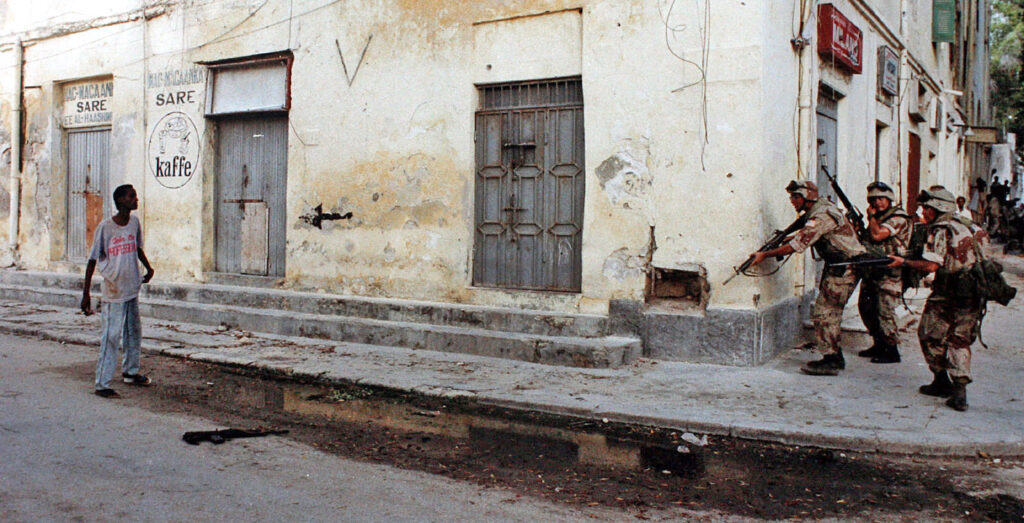
Without conscious thought my finger took up the slack and then squeezed the trigger, one, two, three shots, my sights blurred with concentration and sweat, I heard Marines shouting and a single burst of gunfire to my left. I was dimly aware of scattered shots in return, and the crack of rounds flying overhead. Floral shirt was lying on the bed of the vehicle and the figure in the passenger seat was slumped on the dashboard. The driver gunned the engine, and the truck lurched forward then shot across the intersection, and out of view. Below us, I could see fighters running across the intersection away from our building.
“Cease fire” I yelled, my voice hoarse.
Scarcely three weeks earlier, on 9 December 1992, we had arrived in Mogadishu as part of the initial landing by the 15th Marine Expeditionary Unit. It was an event recorded for posterity – and to our undying embarrassment – on camera for all the world to see. In the footage, furtive figures appear from the surf, dragging behind them rubber boats, which they deposit above the water mark, and creep, weapons at the ready, in a ragged line up the deserted beach. Deserted that is, except for the scores of journalists assembled out of view of the camera. Suddenly the harsh light of a television camera bathes the scene, exposing faces heavily daubed with camouflage paint below the bush hats and bandanas known in the profession as do-rags (this latter breach of discipline will cause deep reverberations up and down the chain of command long after the news cycle moves on). Faces at first fierce, but then wide eyed with shock as they are confronted not by armed militia, but instead a phalanx of correspondents, the incandescent flickering of a hundred cameras, the clicking of shutters clearly audible above the sound of diesel engines. The camera tracks a pair of Cobra attack helicopters as they clatter overhead, menacing shadows against the clouds. Someone is yelling at the press, telling them to get down – the voice high pitched and absurd – there is a ripple of laughter from the media but no interruption of their determined efforts to record the story.
Just 10 months later another iconic piece of footage briefly seized the world’s attention. In it, a handful of Somali youths drag the blackened and dismembered bodies of American troops through the streets of Mogadishu, cheered on by a chanting, clapping crowd. The camera pans to a cluster of excited Somalis bouncing atop the smashed fuselage of a Blackhawk helicopter its splintered rotors hanging limply towards the ground. Then the image disappears vertiginously in a blur of ground and gray sky as the camera crew is chased off.
The series of events that led the same crowds that welcomed the arrival of US troops in December to rejoice in their deaths in October were not well understood at the time – not even at the highest levels of the administration. Instead of analyzing the flawed decisions that led the followers of the country’s most powerful warlord, Mohammed Farrar Aideed, to believe that they were at war against the United States, the consensus at the time within the US government was that it had simply been a mistake to intervene in the first place.
After the Battle of Mogadishu, president Clinton announces that the United States will no longer play the role of a global police force, thus implicitly laying the blame for the debacle on his predecessor. Six months later, a period deemed long enough to avoid the perception of American flight – US troops leave Somalia. For the remainder of the decade, the legacy of Mogadishu is a US foreign policy obsessed with avoiding US casualties.
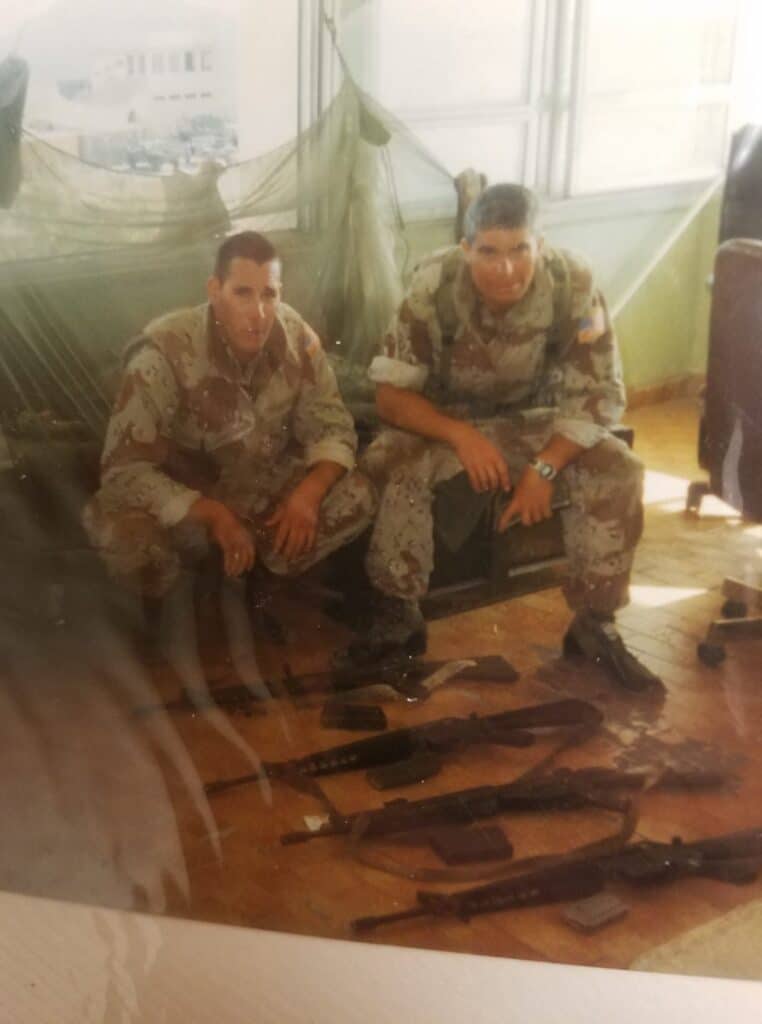
The memory of Mogadishu caused the Clinton administration to recoil from the prospect of preventing genocide in Rwanda and Bosnia. More importantly, it handed to one Osama bin Laden a convenient narrative – and enabled him to rally his organization behind clear campaign goals. The Far Enemy had no appetite for bloody confrontation. By the time that Bin Laden realized his mistake, the pendulum of US policy had swung far the other way and had launched the nation’s military on a trajectory that lost direction long before it lost momentum.
None of this of course was apparent to me at the time as a young lieutenant, experiencing for the first time the sense-sharpening experience of a real operation. It was the first time that the United States had committed troops in such large numbers to a humanitarian mission. The Cold War had come to an end, followed in swift succession by a much-vaunted victory over an absurdly overmatched Iraqi Army. In the euphoria that followed, it must have felt that the world’s most powerful nation could shed its cloak of realpolitik and pursue a policy of enlightened self-interest.
As the three ships carrying 15th Marine Expeditionary Unit backed into open water and swung beneath the Coronado bridge, bound for the Western Pacific, a tragedy was unfolding in Somalia due to all the usual causes: civil war, overpopulation, and misuse of land and rivers. This was, of course nothing new, but 24-hour cable news had recently become a ubiquitous fixture of American life. To a public not yet jaded by a continuous cycle of famine and war, the images coming out of Somalia were harrowing: stick figures, crying babies with distended bellies, flies cramming into their eyes and mouths. Media attention and public opinion combined in a mounting call for intervention. We were in mid-Pacific when President Bush made the decision to send US forces into Somalia. And somewhere in the Pentagon, at echelons beyond reason as Marines are fond of saying, someone decided that 15th MEU would spearhead this commitment.
To be Continued
Read Part One: Skin in the Game
Disclaimer: The views and opinions expressed in this article are those of the authors and do not necessarily reflect the official policy or position of Newslooks.com

